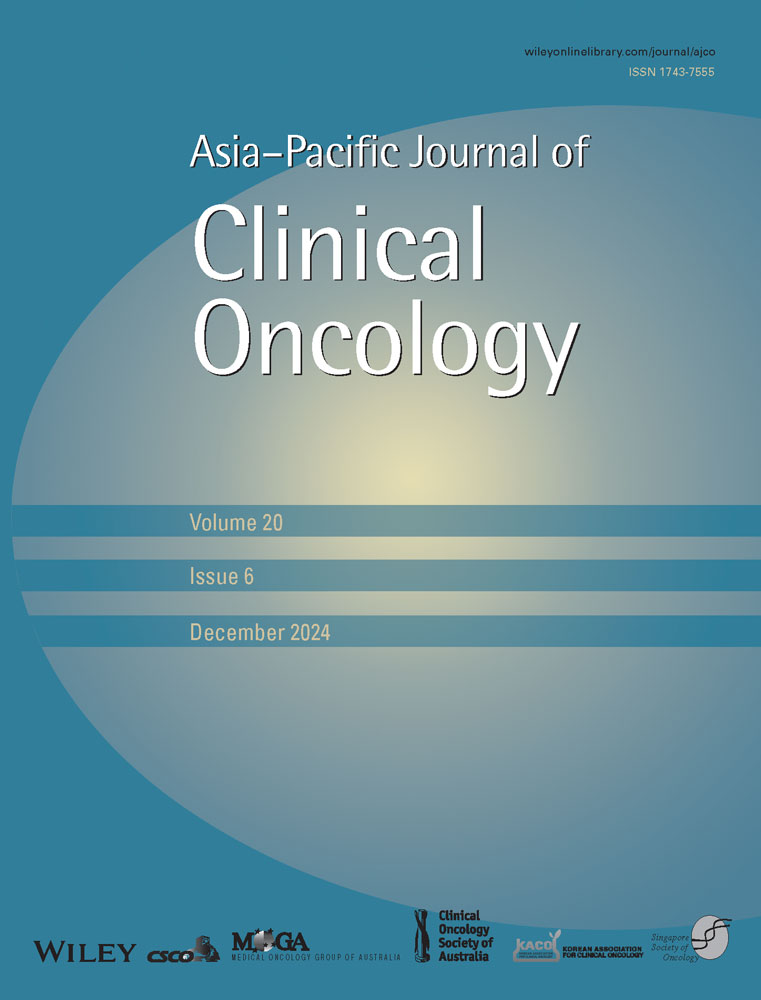Different characteristics of the tumor immune microenvironment among subtypes of salivary gland cancer
Yoshiaki Nagatani and Naomi Kiyota authors contributed equally as first authors to this work.
Abstract
Aim
Although immune checkpoint inhibitors (ICPi) for salivary gland cancer (SGC) have been investigated in clinical trials, details of the tumor immune microenvironment (TIME) remain unclear. This research aimed to elucidate the TIME of SGC and its relationship with tumor mutation burden (TMB) and to explore the rationale for the applicability of ICPi.
Materials and methods
We selected five pathological types, namely adenoid cystic carcinoma (ACC); adenocarcinoma, not otherwise specified (ANOS); salivary duct carcinoma (SDC); and low/high-grade mucoepidermoid carcinoma (MEClow/high). We investigated the TIME and TMB of each pathological type. TIME was evaluated by multiplexed fluorescent immunohistochemistry. TMB was measured by next-generation sequencing.
Results
ACC and MEChigh showed the lowest and highest infiltration of immune effector and suppressor cells in both tumor and stroma. ANOS, SDC, and MEClow showed modest infiltration of immune effector cells in tumors. Correlation analysis showed a positive correlation between CD3+CD8+ T cells in tumor and TMB (r = 0.647). CD3+CD8+ T cells in tumors showed a positive correlation with programmed cell death-ligand 1 expression in tumor cells (r = 0.513) and a weak positive correlation with CD3+CD4+Foxp3+ cells in tumors (r = 0.399). However, no correlation was observed between CD3+CD8+ T cells and CD204+ cells in tumors (r = -0.049).
Conclusion
The TIME of ACC was the so-called immune desert type, which may explain the mechanisms of the poor response to ICPi in previous clinical trials. On the other hand, MEChigh was the immune-inflamed type, and this may support the rationale of ICPi for this pathological subtype.
CONFLICT OF INTEREST STATEMENT
Naomi Kiyota reports grants from Ono Pharmaceutical Co., Ltd, Bristol-Meyers Squibb, AstraZeneca Co., Ltd, Pfizer Co., Ltd, Chugai Pharmaceutical Co., Ltd, Boehringer-Ingelheim, and Bayer outside the submitted work; and honoraria from Ono Pharmaceutical Co., Ltd, Bristol-Meyers Squibb, Merck Biopharma, AstraZeneca Co., Ltd, and Merck Sharp & Dohme. Yoshinori Imamura reports honoraria from Ono Pharmaceutical Co., Ltd, Bristol-Meyers Squibb, and MSD. Ken-Ichi Nibu reports honoraria from Ono Pharmaceutical Co., Ltd, Chugai Pharmaceutical Co., Ltd, Bayer, Merck Biopharma, Rakuten Medical, Inc., Abbott Medical Japan LLC, MSD, KYORIN Pharmaceutical Co., Ltd. Kazuko Sakai reports honoraria from Hitachi, Life Technologies Japan Ltd, Chugai Pharmaceutical Co., Ltd, Takeda Pharmaceutical Co., Ltd, and Qiagen, Inc. Kazuto Nishio reports grants from Nippon Boehringer-Ingelheim, Eli Lilly Japan, SYSMEX, outside the submitted work; and honoraria from Chugai Pharmaceutical Co., Ltd, Pfizer, Eli Lilly Japan, MSD, Novartis Pharma, SymBio Pharmaceuticals, AstraZeneca Co., Ltd, Amgen, Merck Biopharma, Roche Diagnostics, Otsuka Pharmaceutical, Yakult Honsha, Guardant Health, Takeda pharmaceuticals, Boehringer-Ingelheim, Bristol-Myers Squibb, Janssen Pharmaceutical, Daiichi-Sankyo, and Ono Pharmaceutical Co., Ltd. Tetsuya Nakatsura reports grants from Ono Pharmaceutical Co., Ltd outside the submitted work. Shigehisa Kitano reports grants from AstraZeneca Co., Ltd, Pfizer, Boehringer-Ingelheim, MSD, Eisai, Astellas, Ono Pharmaceutical Co., Ltd, Takara Bio Inc., GlaxoSmithKline, Daiichi-Sankyo, Chugai Pharmaceutical Co., Ltd, Incyte, Takeda, Eli Lilly Japan K.K., Abbvie, LOXO Oncology, Japan Society for the Promotion of Science, and Japan Agency for Medical Research and Development outside the submitted work; and honoraria from AstraZeneca Co., Ltd, Pfizer, Boehringer-Ingelheim, Taiho, Novartis, MSD, Sumitomo Pharma, Eisai, Ono Pharmaceutical Co., Ltd, Bristol-Myers Squibb, Rakuten Medical, GlaxoSmithKline, Daiichi-Sankyo, Chugai Pharmaceutical Co., Ltd, ImmuniT Research Inc., Merck KGaA, Takeda, United Immunity, Eli Lilly Japan K.K., Novartis, Janssen, and Pharmaceuticals and Medical Devices Agency. Hironobu Minami reports grants from Ono Pharmaceutical Co., Ltd, Chugai Pharmaceutical Co., Ltd, and MSD outside the submitted work; and honoraria from Ono Pharmaceutical Co., Ltd, Bristol-Meyers Squibb, Merck Biopharma, and Chugai Pharmaceutical Co., Ltd. The other authors declare no conflict of interest.
Open Research
DATA AVAILABILITY STATEMENT
The datasets generated and analyzed during the current study are available from the corresponding author upon reasonable request.




